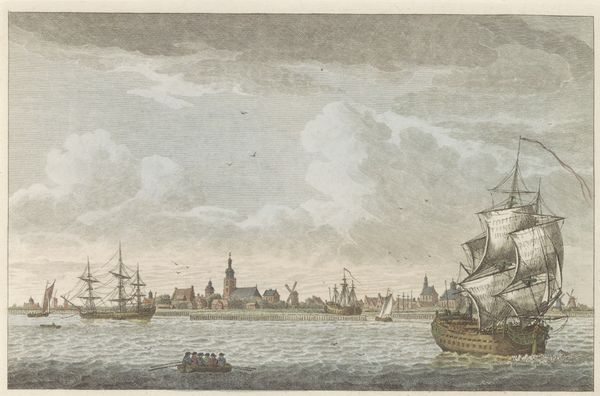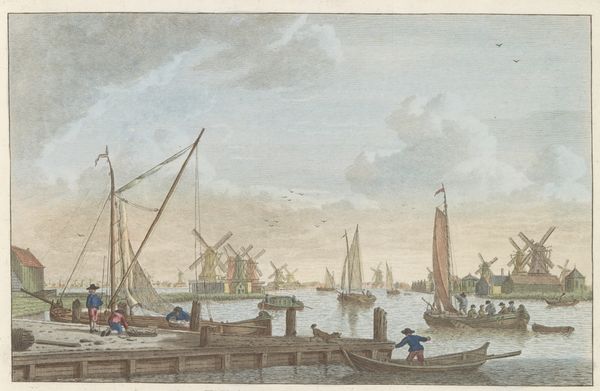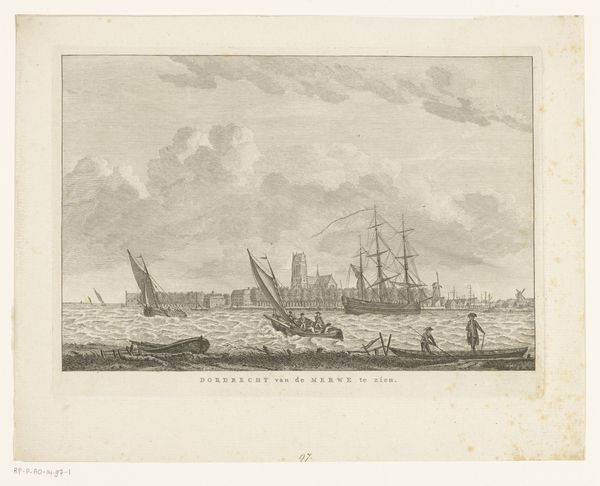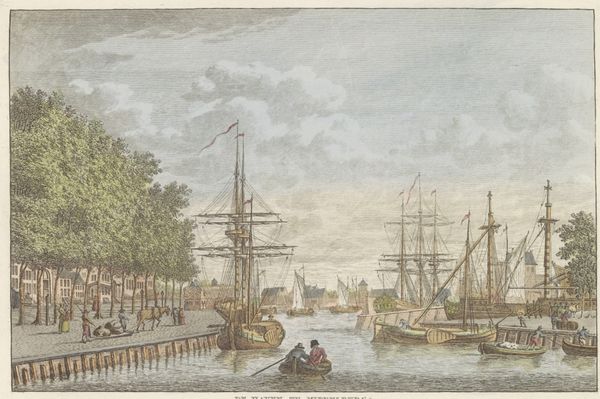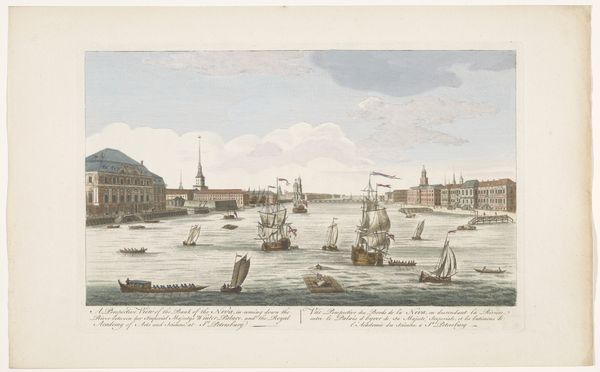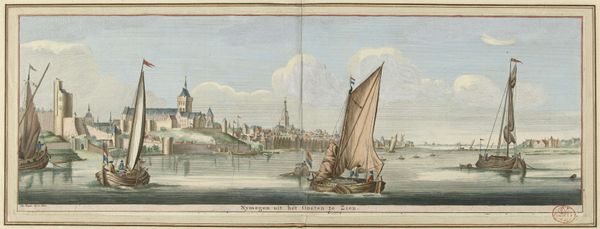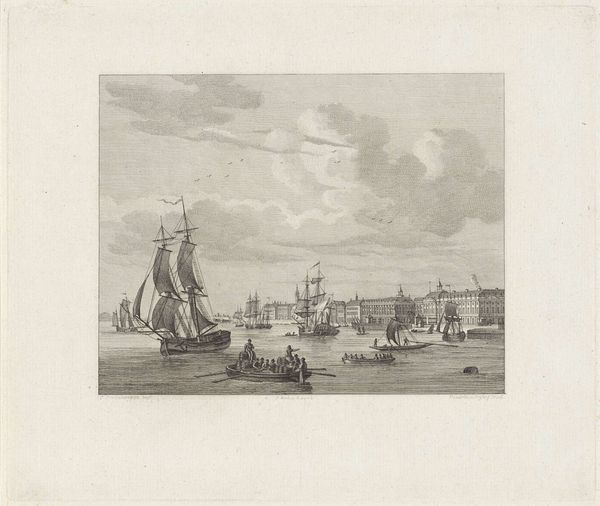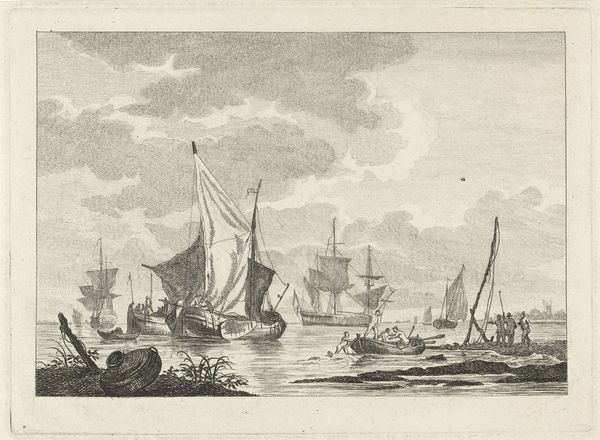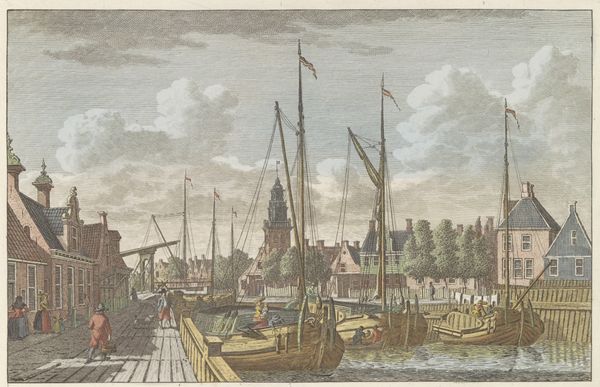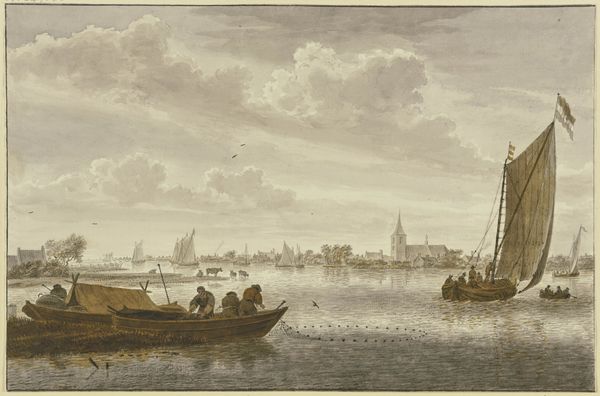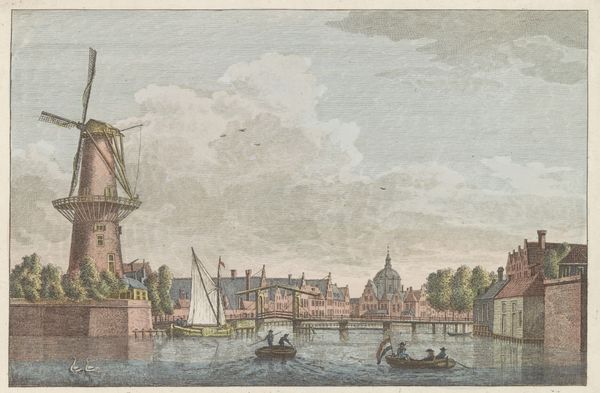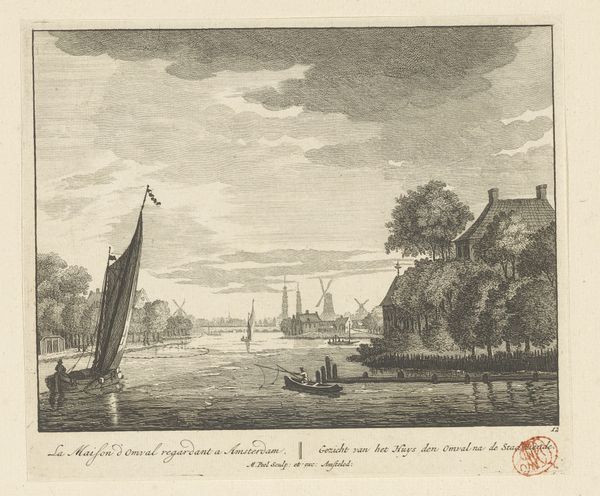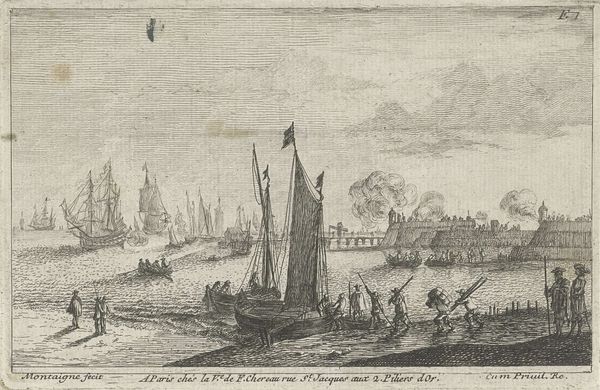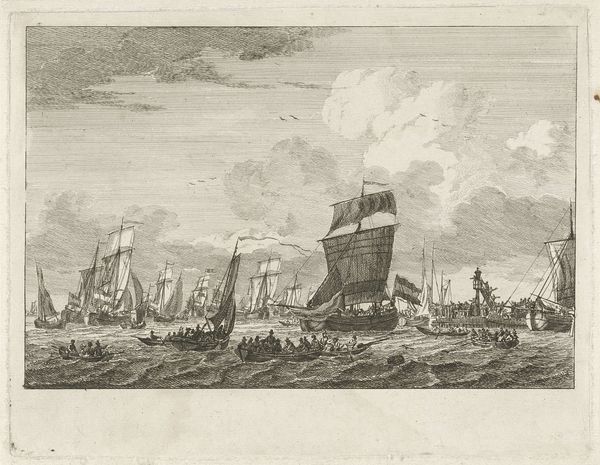
drawing, watercolor
#
drawing
#
water colours
#
landscape
#
watercolor
#
coloured pencil
#
romanticism
#
cityscape
#
watercolor
Dimensions: height 172 mm, width 243 mm
Copyright: Rijks Museum: Open Domain
Curator: Carel Frederik Bendorp gives us this rendering of Dordrecht from the Merwede, a watercolor and colored pencil piece likely created between 1786 and 1825. Editor: It’s quite a muted scene. Gray-blues and greens, giving it an almost melancholy feel, wouldn't you agree? Curator: Absolutely. Bendorp's capture of the Dutch landscape is steeped in a certain somber Romanticism. Though, it is so typically Dutch in its emphasis on waterways and maritime activity. The composition draws your eye from the foreground boats to the distant skyline. The looming church suggests the continuing presence of traditional authority in daily life. Editor: I see that tension, the every-day right up against these massive, longstanding institutions. I can’t help but notice how the sailboats, those tiny figures struggling against the currents, they really amplify the weight of that church, but even the merchants out on the larger vessels – does this speak to a shift toward mercantilism, of individuals attempting to prosper outside those long standing rigid hierarchies? Curator: It certainly could. Dordrecht was a major trading hub during the period. Works like this played a role in shaping Dutch national identity during times of political upheaval, for sure. It speaks to civic pride and a deep connection to the water, both essential to the Netherlands’ economy. The very act of meticulously rendering this scene broadcasts that a kind of inherent importance that extends beyond a simple depiction of a townscape. Editor: But it also feels deliberately uncomplicated. We're invited to gaze across this flat terrain without acknowledging the colonial exploits that financed this view. Who has access to "civic pride"? And whose labor literally buoys this image? Curator: An astute observation, there’s certainly an inherent complexity to this vision of the past. These idyllic landscapes are often blind to their socio-political backdrop. It is essential to confront such elisions. Editor: To contextualize works like these then means interrogating who is represented in this collective sense of 'Dutch-ness'. Who benefits? Whose stories are told? It forces a vital reassessment. Curator: Indeed. Analyzing "Dordrecht vanaf de Merwede" through multiple lenses allows us to understand the artwork as both a reflection and construction of history. Editor: I think considering both aspects provides us with more meaningful points of entry to understand art's complex power.
Comments
No comments
Be the first to comment and join the conversation on the ultimate creative platform.
